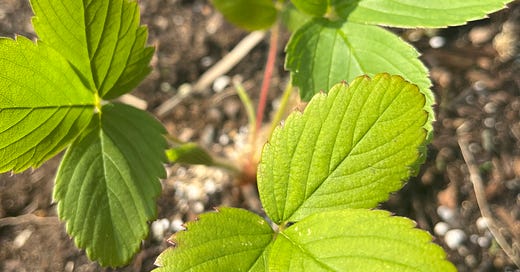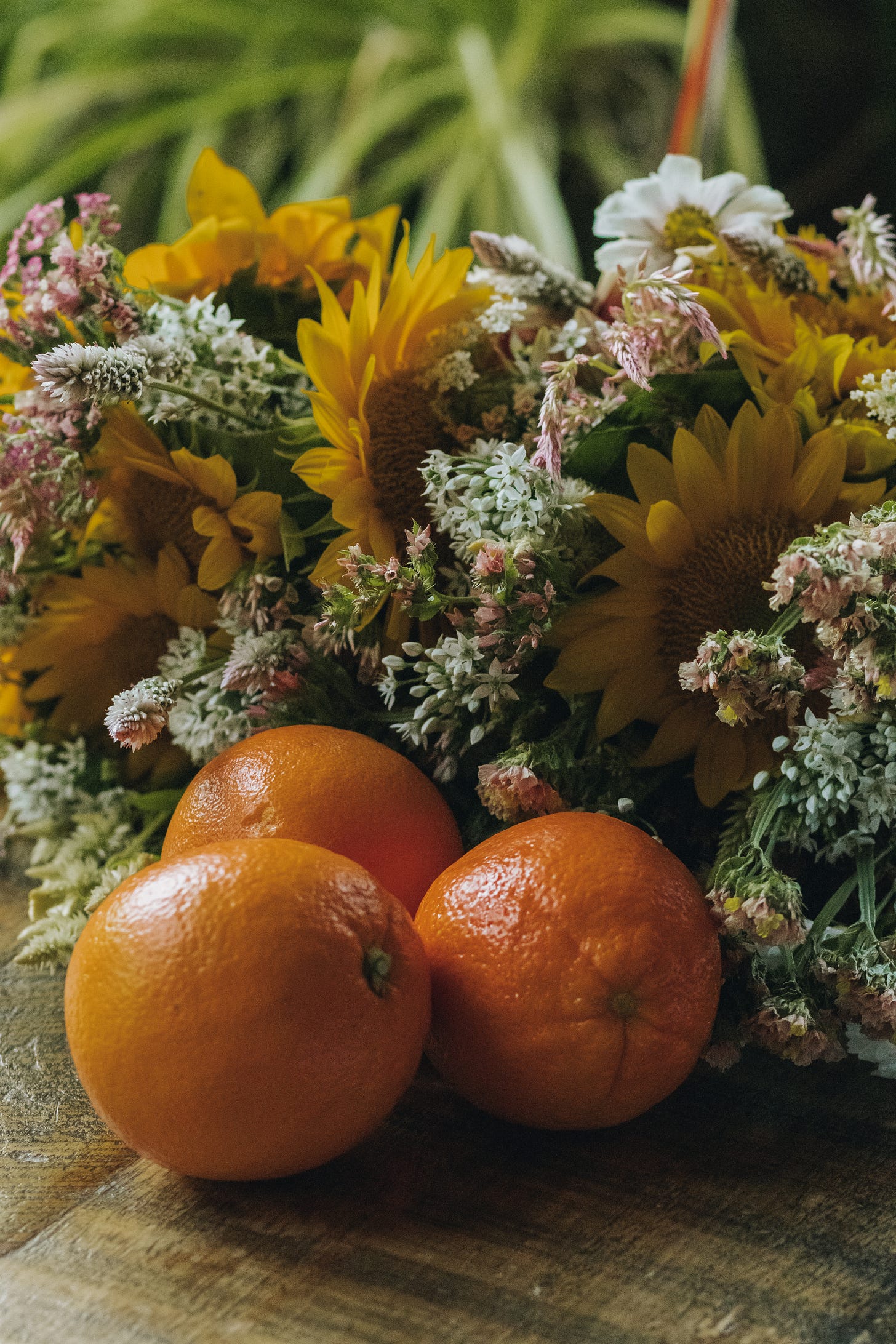It’s spring! And I’ve been planting and tending to wild strawberries in front of my house. We dug up our poorly maintained grass lawn, and in its place, I planted a small collection of plants to create a wildlife-friendly native ecosystem.
I was deeply moved by indigenous botanist Robin Wall Kimmerer’s essay about strawberries in Braiding Sweetgrass. She describes wild strawberries (fragaria virginiana) as a gift freely given to us by the earth. “Strawberries belong only to themselves,” she writes. However, store-bought strawberries are commodities, not gifts. We make a choice whether or not to share our strawberries “as a common gift” or to sell them “as a private commodity.” How can it be right to commodify something that is freely given to us by nature?
In thinking about my soon to be berries, I’ve also been reflecting on my now full-time job as an artist.
I don’t know how to extricate my art practice from existing within our capitalist market. Recently, I had a very challenging client. Please respect my labor, I thought angrily, as this client sent me email after email, asking me to work outside of the contract. Surprisingly, I didn’t think about how the client might respect my art. I purely thought of my art as labor for this company.
And seriously, art is work. A contract — which I felt so grateful for — protects me and my boundaries. And, it also commodifies my art. Is it impossible to ask your art to be loved as a gift, when both the receiver and you yourself think of it as a commodity?
I want my art and stories to be a gift, not a cog in the capitalist machine, something that I freely create for myself and my community. I have found many precious moments in which that is true. When it comes to painting community murals, or even the daily process of writing and drawing my books, I have the feeling that I want to do this, and I would do it anyway, whether or not I am paid for that work. And perhaps that is as it should be — that doing what I want and love will also feed me both literally and metaphorically. Is that too much to ask?
I don’t really know what to make of it. But I’ll leave you with this thought from Kimmerer:
We can choose. If all the world is a commodity, how poor we grow. When all the world is a gift in motion, how wealthy we become.
Looking forward to June’s strawberry moon.
some 🍓 that i appreciate
Last week, some friends reminded me about “strawberry friends” —
🍓 Thank you to my friends and family for supporting me at the AAPI Commission’s Unity Dinner. As undeserving as I feel to receive any award, I feel so grateful to my community for being my fam.
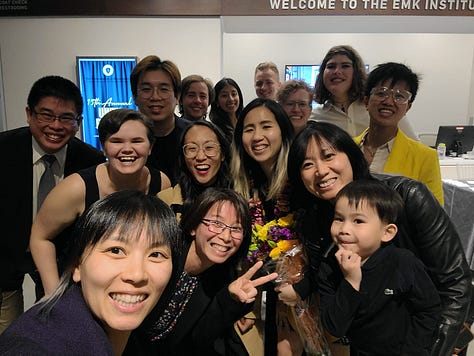
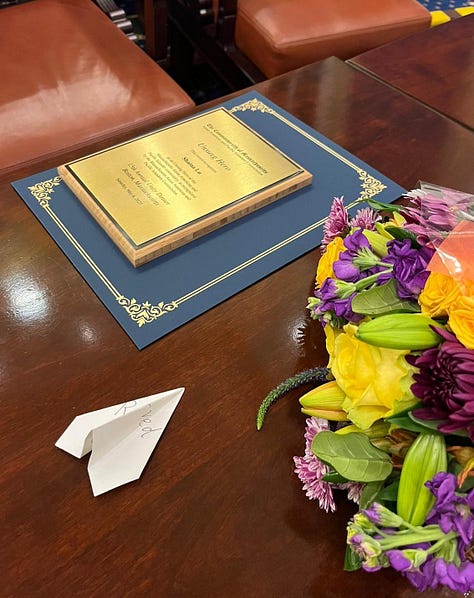
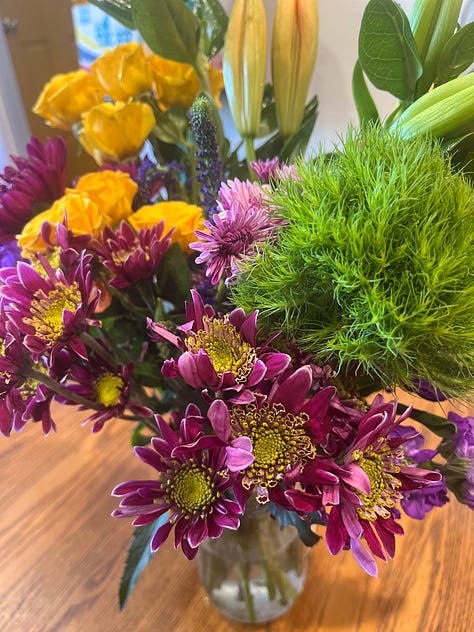
🍓 I took a week in Philadelphia to visit some dear, dear friends. Thank you for being incredible hosts!
🍓 I had a fun time making a billion zines with kids with Pao Arts Center at Brookline’s AAPI Heritage Day event and also, with Wah Lum kids. So much love for all the young artists in my life.

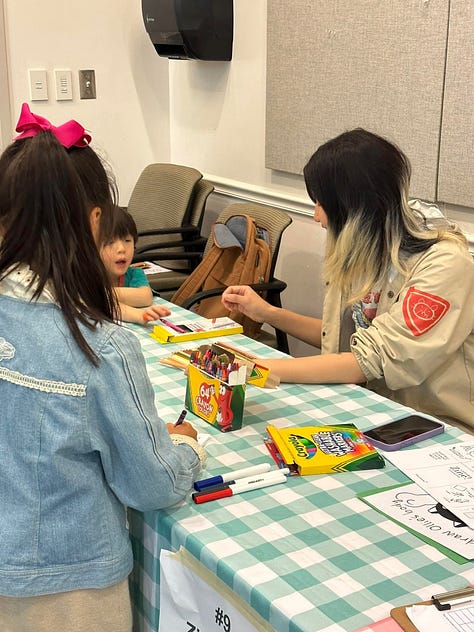

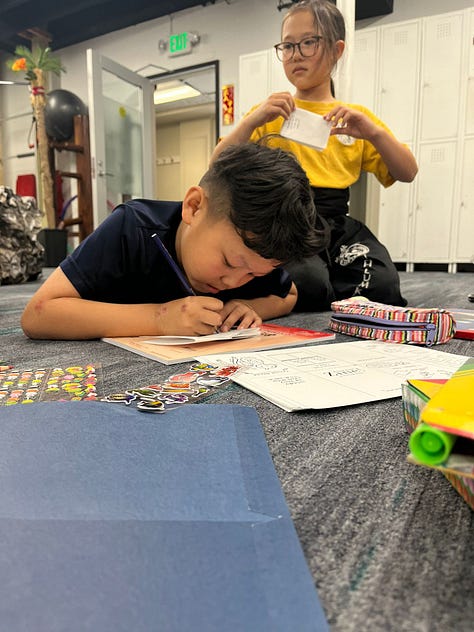
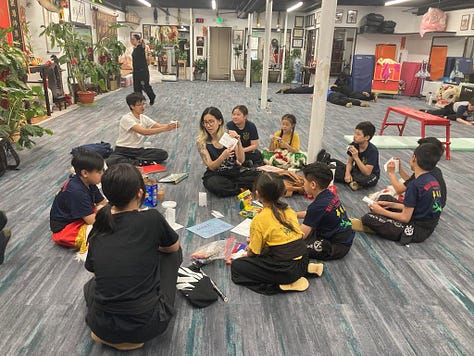
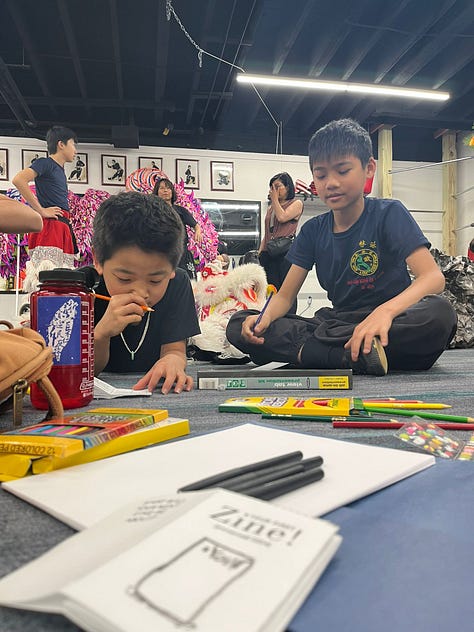
top row: Brookline AAPI Heritage Day! (photos by Cynthia Woo); bottom row: Wah Lum Quincy (photos by Jenn Segawa)
some things to look forward to
Swing by my table at the Boston Kids Comics Fest on Saturday, June 3rd to pick up some comics from me. I *think* I’ll have some young artists vending at my table, too, and I’ll be making more zines in June with Boston Public Schools at the Pao Arts Center! Come byyyy. I’ll be posting more details in my events calendar!
Come watch Lily Xie’s animated film, which imagines Chinatown as a person!
some things i’m enjoying and want *you* to enjoy
Wellesley College’s Edible Ecosystem Teaching Garden is what initially inspired me to rethink my garden!
The plant nursery I visited is called Blue Stem Natives in Norwell, MA. We felt a little bad ripping innocent plants out of the ground, but I think we (including our local birds & insects) will be a lot happier with our new plants. Here are the plants we picked:
Ground covers: Wild Strawberry - a great perennial ground cover that sends out runners all over to quickly cover your yard AND puts out cute little strawberries; Sweet Everlasting - a little biennial ground cover herb that apparently smells like “maple syrup.” Vivian and I don’t agree. We think it smells like Chinese medicine, haha.
Wildflowers: Golden Alexanders (yellow flowers, good for butterflies); Sweet Goldenrod (yellow flowers, scented leaves, good for butterflies & bees); Calico Aster (fun color changes, good for bees). Apparently, goldenrod and asters are a natural visual pairing, both for humans and bees to enjoy.
I also got some seedlings from a former Chinatown coworker turned local farmer. Reach out here to get your own! (Also — if you’re looking for floral arrangements — pictured below, I can’t recommend them enough.)
Related to gardening, but in a very different way — I really enjoyed Felix Poon’s podcast episode Yardwork: A Bitter Melon Grows in Boston, which is about the Berkeley Community Gardens in Chinatown/South End and immigrant resilience and gardening.
Some people see something special happening at The Berkeley Community Garden in Boston’s South End: a multicultural gardening community built from the rubble of a demolished city block, a green oasis of Chinese plants like bitter melon that’s been cultivated here for more than half a century.
Ok byeeeeee!

